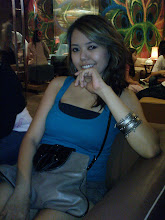Monday, April 13, 2009
Document Design
The blog is created to blending with purpose multimodal elements and to meet the needs of variety features related to publication and design. A major benefit of multiple modalities is that they allow us to experience learning in ways in which they are most comfortable while also challenging them to experience and learn in other ways as well. The targeted audiences are focused to all the students major in communication and those who want to increase their knowledge in document design.
Realizing that a good document as Anderson (1987, p. 428) points out, is a document that helps readers read efficiently, emphasizes the most important contents, and encourages readers to feel good about a communication. A combination of other elements such as visual images, graphic elements, will enhance the audiences interest, and it is also agreed by Reep (2006, p. 134), that reader’s do not read only printed words on a page; but also “read” visual presentations of the text.
Having the same information in multiple places on a page, presented in different ways, is OK. Different readers use different strategies for finding what they want, and the goal is to help them find what they want, not to produce the one "correct" way. Once a reader finds something in one place on a page, they often will continue to look there on other pages. The 'Redundancy' principle in combining graphics and prose as elaborated in Schriver (1997) was applied to enhance the audience's understanding of my points.

By looking at this article, I can say that the present of the visual grammar such as colors, angle, perspective, line and so on would be more interesting rather that the written-text alone because it will allow the audiences to read imaginatively and effectively (Kress & van Leeuwen, 1996; Simpson 2004; Unsworth 2001)
In my presentation, I’ll try to make my words precise and shorts, most importantly to conclude all sentences into summaries. This is because audiences will usually look for the ‘shorter parts’ in the reading. In fact, fluffy sentences will only makes the document complicated and decrease the reader’s interest and understanding. That is why I’ll try to visualize the text into other elements such as ‘images’.
Now we all knows that pictures says a thousand words but do we all agree with this idea and according to Walsh (2006, pg. 30) in her discussion of the picture book said that images can fills the page. A function of a picture is to create a meaning and helps the audience or readers give an understanding of what it is trying to say. For example take a look of the picture below:

By looking at this picture without any words, readers will know that it is a picture of a car accident. In this context, pictures play a very important in conducting a good document design. This is because it’s generating connection between the readers and the text.
Last but not least, I notice how much easier the list use in my slides for the readers to read. I provide less information so that the conclusion will be written in short statements to enhance my audience understanding.
REFERENCES
- Anderson, P, Brockmann, RJ, & Miller, C (Eds), 1983, New essays in scientific and technical communication : Research, theory, practice, Farmingdale, New York, Raywood.
- Reep, Diana C. 2006, ‘Chp 6: Document Design,’ in Technical Writing, 6th ed., Pearson Edu, Inc., New York, p. 133-172.
- Simpson, A 2004, Visual Literacy: A Coded Language for Viewing in the Classroom, PEN 142, Peta, Sydney.
- Unsworth, L 2001, Teaching Multiliteracies Across the Curriculum, Changing Contexts of Text and Image in Classroom Practice, Open University Press, Buckingham.
- Walsh, M. 2006,” ‘Textual shift’: Examining the reading process with print, visual and multimodal texts,” Australian Journal of Language and Literacy, vol.29, no.1, p.24-37.
- Schriver K.A 1997, Dynamics in Document Design: Creating Texts for Readers, Wiley Computer Pub., New York.
